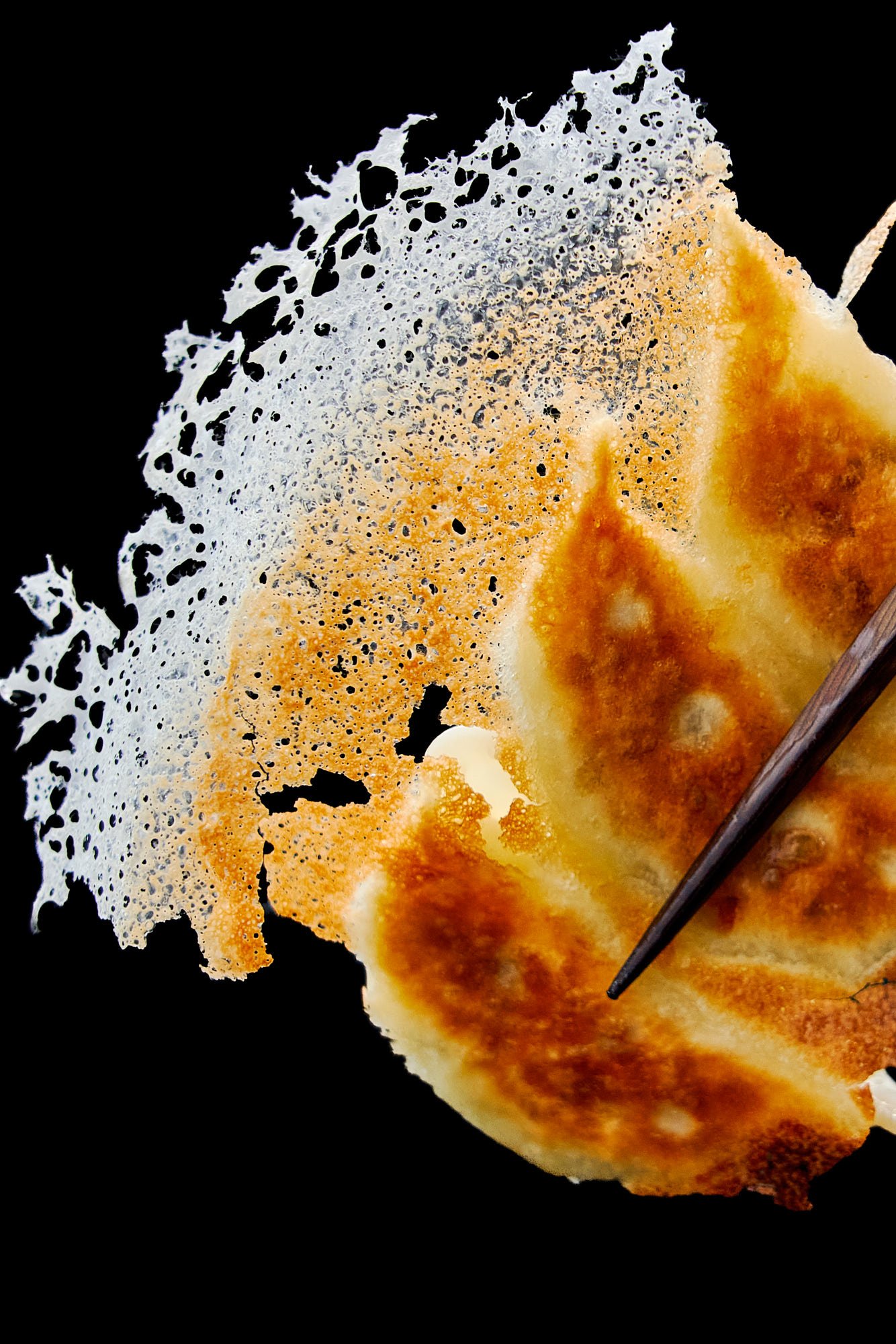I recently had the honor of learning this technique from its creator, Chef Isao Yagi of Nihao Honten. At 90 years old, Chef Yagi is still a force in the kitchen, and the opportunity to learn directly from the master was truly humbling. His innovative method involves steaming the potstickers in a flour and water batter, forming a thin, crispy skirt around the dumplings as the water evaporates. Since learning Chef Yagi’s method, I’ve been on a mission to perfect my crispy gyoza game, and I want to share my recipe to get restaurant-quality results at home. I have a ton of potsticker recipes, whether you want a juicy pork and cabbage gyoza, a fragrant shiso one, a vegan gyoza recipe, or a modern cheesy dumpling. Then, you can follow this frying method to get crispy wings.
Why This Recipe Works?
Getting the right consistency in the batter is crucial, and after learning the technique from Chef Yagi, I ran over 20 tests to find a ratio that makes the perfect crisp skirt for these dumplings. Using boiling water to gelatinize the starch in the flour prevents the slurry from settling. Adding a small amount of oil to the batter prevents the need to start with oil in the pan. It also helps to avoid boil-overs while steaming the dumplings. Waiting until all the liquid evaporates before adding oil ensures a smooth, crispy skirt without too many holes.
Ingredients
Gyoza Dumplings - This recipe makes enough batter for about 30 uncooked gyoza. You can use your favorite dumpling recipe or make a batch of my juicy pork and cabbage gyoza, which includes ground meat, cabbage, ginger, garlic chives, toasted sesame oil, and oyster sauce, but store-bought gyoza will work in a pinch. Flour - All-purpose flour forms the base of our crispy wing batter. It’s crucial for creating that delicate, lacy texture. I’ve tried using potato starch to make the wings in the past, but it doesn’t have the same texture as wheat flour. Water - A small amount of room-temperature water is mixed with the flour initially to prevent lumps in the slurry from forming. Vegetable Oil - You’ll need a small amount of neutral-flavored oil (such as canola oil or sunflower oil) for the batter and some additional oil to brown the crispy crust. Boiling Water - Boiling water gelatinizes (cooks) the batter, which prevents the flour from settling and ensures the crispy bottoms are thin and uniform.
How to Make Crispy Dumplings (Hanetsuki Gyoza)
To prepare the batter, start by combining the flour, room-temperature water, and oil until you have a smooth, lump-free mixture with the consistency of pancake batter. Then, add 1 ½ cups of boiling water to the flour mixture. This crucial step cooks the flour, preventing it from settling and ensuring an even, layer of crispy perfection. Use an immersion blender to emulsify the slurry until it resembles a thin gravy. Heat a non-stick skillet over medium-high heat until it’s hot but not scorching. Pour ½ cup of the prepared batter into the pan, then quickly arrange 10 dumplings in two neat rows. Leave a little space between each dumpling—this allows the batter to spread and form the crispy crust. Cover the pan with a lid, turn the stove to medium heat, and set a timer for 5 minutes. This allows the dumplings to steam. As the liquid evaporates from the batter, a crispy skirt begins to form on the bottom of the skillet. Keep an eye on the heat and adjust as needed—you want the liquid to be gently boiling but not so vigorously that it boils over. After about 5 minutes, most of the liquid should have evaporated. Remove the lid and let any remaining water cook off. This step is crucial—the batter on the bottom of the pan must be dry and crisp before moving on. If it’s not, your gyoza wings will have holes in them. Once the pan is dry, drizzle about a tablespoon of oil around the edges of the pan and over the potstickers. This extra oil helps the wings brown evenly. When the wings have reached a beautiful medium brown color, it’s time to serve. Use a spatula to cut the sheet of gyoza with wings in half, separating the two rows. Plate your hanetsuki gyoza with the wing side up to maintain that satisfying crunch for as long as possible.
Serve it With
While these crispy gyoza are flavorful on their own, a basic dipping sauce of soy sauce, rice vinegar, and a dollop of my homemade chili oil can take them to the next level. Check out my gyoza dipping sauce recipes for more ideas. These Japanese dumplings go great with vegetable side dishes like my smashed cucumber salad, grilled shishito peppers, or my spicy edamame. If you have leftover dumplings, try making my gyoza soup. To round out the meal, a bowl of sobameshi or shrimp fried rice is all you need to turn this into a complete meal.
📖 Recipe












